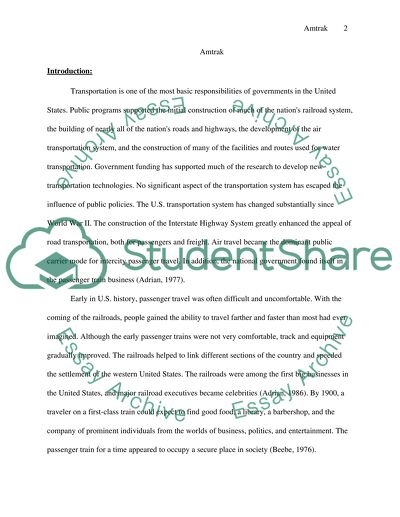Cite this document
(“Amtrak Essay Example | Topics and Well Written Essays - 1250 words”, n.d.)
Retrieved from https://studentshare.org/miscellaneous/1504956-amtrak
Retrieved from https://studentshare.org/miscellaneous/1504956-amtrak
(Amtrak Essay Example | Topics and Well Written Essays - 1250 Words)
https://studentshare.org/miscellaneous/1504956-amtrak.
https://studentshare.org/miscellaneous/1504956-amtrak.
“Amtrak Essay Example | Topics and Well Written Essays - 1250 Words”, n.d. https://studentshare.org/miscellaneous/1504956-amtrak.


